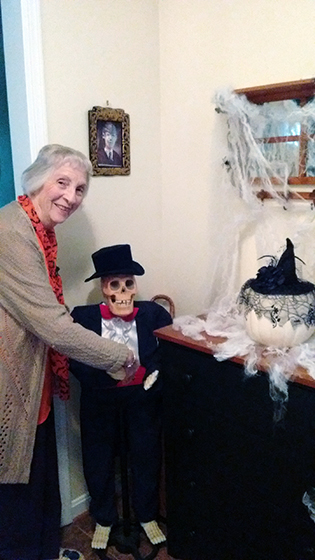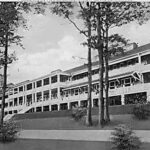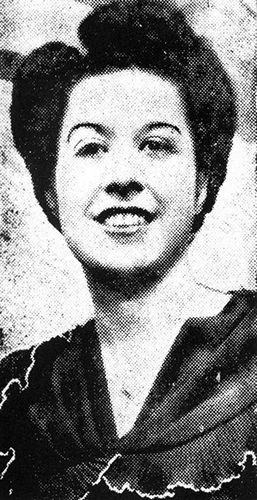by Valerie Nusbaum
My mother passed away recently, and as lots of you know from your own experience with loss, this is a very difficult time. I hope you’ll indulge me as I share some thoughts and memories of happy times with Mom.
Autumn was my mom’s favorite time of year. She loved it when the nights got cooler, and the leaves turned vibrant, beautiful colors. She and I took at least one leaf-peeping ride through the mountains every year and each time she’d exclaim that that year was more colorful than the last. Now, I’ll think of Mom every year when the leaves change colors and will miss our outings.
Mom loved all the fall holidays, but she had a special fondness for Halloween, particularly in her later years. Since Randy and I live on a corner in a well-lit housing development with sidewalks, we tend to get trick-or-treaters in droves. Most of the kids aren’t from our neighborhood, and we rarely know any of them, but most years, we try to have candy and treats on hand for at least the first 300 or so. Mom enjoyed coming here for trick-or-treat, and she always contributed candy to the pot. We started this tradition when she was around 70 years old. We kept it up through last year when she got too tired to sit at her post and had to quit before the candy ran out. Mom’s “post” was sitting in our living room in the middle of our big bay window. I’d place a chair there for her so that she could see everything and everyone on the street and in our driveway. She was a good sport and dressed up in any costume I had for her. I’d decorate the window to match a given year’s theme, and Mom played along.
One year, I made her an owl with a feathered mask and wings. She was a spider woman once, and another time, a witch. Mom sat amid the spider webs and varmints, and she used a flashlight held under her chin to scare the kids. She cracked herself up. She especially loved looking at the little ones’ costumes, and year after year, she fussed about the big kids being too old. Mom could always be counted on to say, “Well, what’s that baby going to do with the candy? He doesn’t even have teeth yet.” Randy, bless him, sat on the steps beneath the bay window to pass out treats so that Mom could be right on top of things without getting cold.
Each Halloween, I tried to make a little party for us, and I always had themed snacks like Jack o’lantern pizza, bat sandwiches, and werewolf fingers dipped in “blood.” Every fall, without fail, I could look forward to a batch of Mom’s pumpkin muffins and a breakfast of pumpkin pancakes. My mother started that whole pumpkin spice thing. I’m going to miss those muffins and pancakes. My own will never taste as good.
One year, I threw a family party for Halloween. My cousins made the trip here from three states away, along with my two aunts from Jefferson County, West Virginia. Things were going along pretty well until Randy brought out his picture search game. He’d printed a holiday drawing off the internet, but he unintentionally cut the bottom off the picture so no one was able to find several of the items in the search. It was getting pretty noisy, and then Mom couldn’t figure out the word search, and she insisted that the word haunted was nuthead. The next thing I knew, Mom was having a full-blown attach of vertigo, and we had to call the ambulance. You know it’s a good party when the paramedics show up.
There were other Halloween parties, too. One year, Mom dressed as a fortune teller and read everyone’s palm while looking in her crystal ball. Since the crystal ball was actually a glass paperweight with a rose inside it, everyone’s life was going to be rosy.
Another year, Mom participated in trick-or-treat at her home in Brunswick. There weren’t too many kids, but Mom ran out of candy anyway—probably because my dad (who was still with us at the time) had eaten most of it. Mom made poor Randy go down to her basement and dig through the freezer for candy that she had frozen to avoid eating. One poor kid got a wrapped, frozen Santa in his bag.
For another Halloween treat, Randy and I took Mom to the Sea Witch Festival in Rehoboth Beach, Delaware. It was a fun time for us, but Mom saw a whole lot of things that shocked her, and she didn’t want to go back there the following year.
My mother so loved going to the Halloween Spirit store in Charles Town. I could hear her all over the store, jumping up and down and laughing. The clerk heard it, too, and asked me if I needed to go check on my child. I explained that what she heard was my then 85-year-old mother. Mom was too little to activate the sensors just by stepping on them, so she had to jump on them in order to make the figures move and make noise. She was child-like in her delight of things, and I’ll miss that most of all.
Happy Halloween to all of you!

Valerie’s mom, Wanda Zombro, and a mystery man at Halloween 2018.






